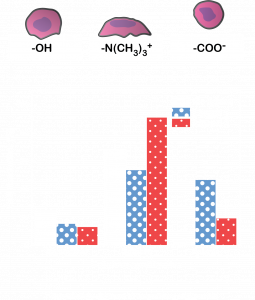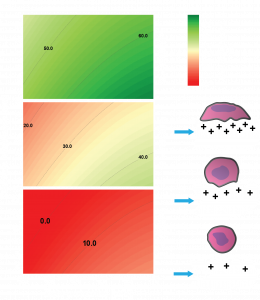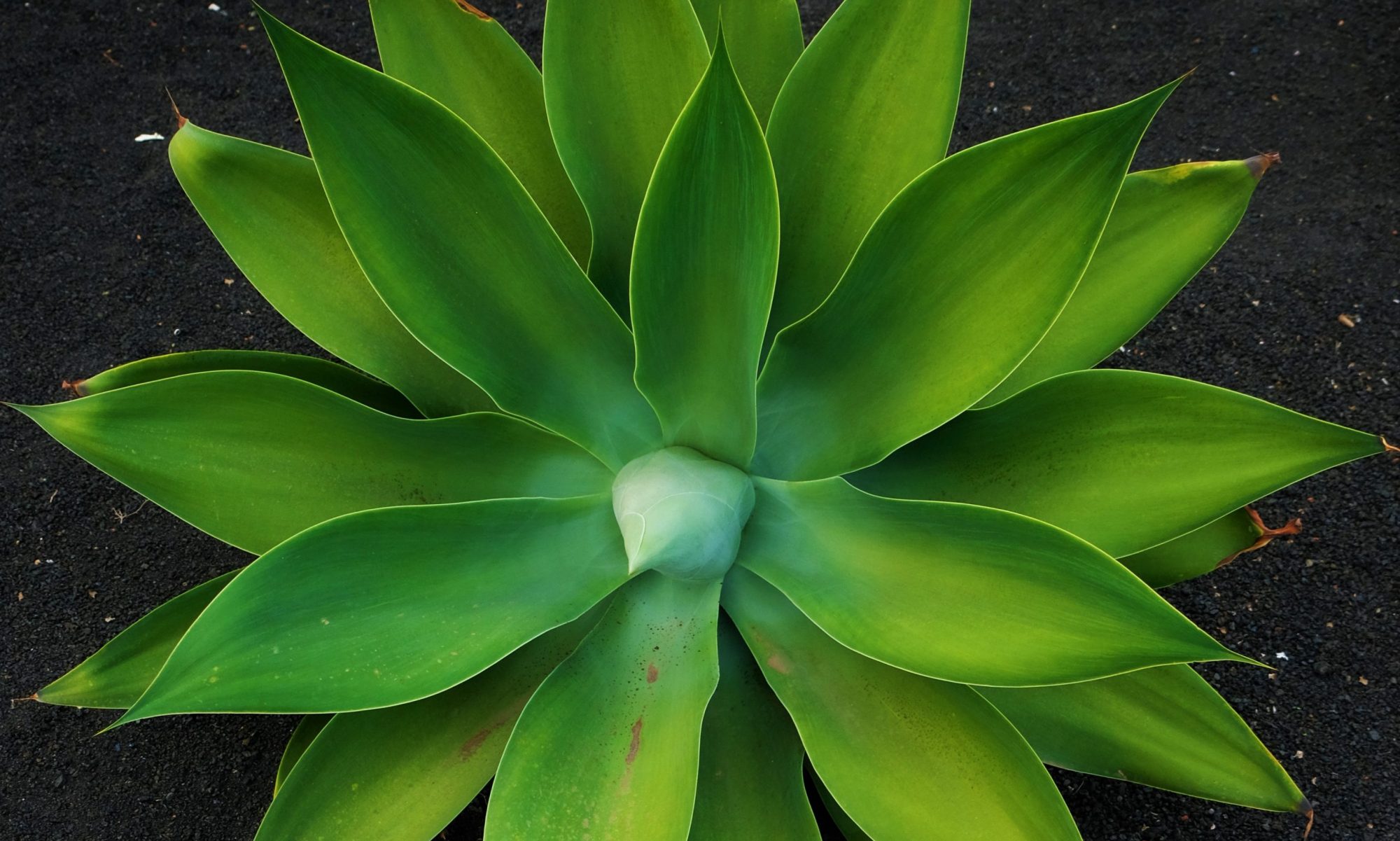 Tissue engineering aims to restore, or replace, biological tissue to overcome injuries and disease. It is a multidisciplinary research area bringing together clinicians, cell biologists, and materials scientists. To successfully generate new tissue, one requires the right cell type and a scaffold to ensure that the cells remain at the required site, rather than disperse through the body.
Tissue engineering aims to restore, or replace, biological tissue to overcome injuries and disease. It is a multidisciplinary research area bringing together clinicians, cell biologists, and materials scientists. To successfully generate new tissue, one requires the right cell type and a scaffold to ensure that the cells remain at the required site, rather than disperse through the body.
The properties of the scaffold play an important role in how the cells respond. For example, stem cells will preferentially differentiate to nerve cells on a soft scaffold, whilst bone cells form on a stiff scaffold. It was previously known that the surface chemistry of the scaffold influenced cell attachment, but it was assumed that a protein, or ligand, would be required to mediate cell attachment to the surface.
 The surfaces of cells are slightly negatively charged due to the presence of glycans. We hypothesized that this would result in preferential cell attachment to positively charged surfaces in the absence of a mediating ligand. To test this, we chemically modified the surface of bacterial cellulose, a poor candidate for 2D cell attachment, to incorporate cationic and anionic groups. We confirmed that the introduction of the positive, cationic group significantly increased cell attachment in both the absence, and presence, of ligands. Conversely, the negative, anionic groups only increased cell attachment when suitable ligands were present. Cell attachment decreased compared to the unmodified scaffold when ligands were not present. Thus, we confirmed the importance of scaffold surface charge when considering cell attachment.
The surfaces of cells are slightly negatively charged due to the presence of glycans. We hypothesized that this would result in preferential cell attachment to positively charged surfaces in the absence of a mediating ligand. To test this, we chemically modified the surface of bacterial cellulose, a poor candidate for 2D cell attachment, to incorporate cationic and anionic groups. We confirmed that the introduction of the positive, cationic group significantly increased cell attachment in both the absence, and presence, of ligands. Conversely, the negative, anionic groups only increased cell attachment when suitable ligands were present. Cell attachment decreased compared to the unmodified scaffold when ligands were not present. Thus, we confirmed the importance of scaffold surface charge when considering cell attachment.
 Building on this, we knew from the literature that the stiffness and surface roughness of the scaffold affected cell response but no-one had developed a model to understand the interplay between the different parameters. We produced a series of regenerated cellulose scaffolds with chitosan present at the scaffold surface. Variation in the type of cellulose used and chitosan properties resulted in variation in the shear stress modulus (G), surface roughness and surface charge of the scaffolds. Regression modelling was successfully used to predict cell attachment on the scaffolds based on these parameters. Importantly, cell response in the presence of ligands could not be predicted, highlighting the need to determine scaffold properties in the same environment as that observed by the cells.
Building on this, we knew from the literature that the stiffness and surface roughness of the scaffold affected cell response but no-one had developed a model to understand the interplay between the different parameters. We produced a series of regenerated cellulose scaffolds with chitosan present at the scaffold surface. Variation in the type of cellulose used and chitosan properties resulted in variation in the shear stress modulus (G), surface roughness and surface charge of the scaffolds. Regression modelling was successfully used to predict cell attachment on the scaffolds based on these parameters. Importantly, cell response in the presence of ligands could not be predicted, highlighting the need to determine scaffold properties in the same environment as that observed by the cells.
Full details of the research described here may be found in:
Courtenay JC, Johns MA, Galembeck F, Deneke C, Lanzoni EM, Costa CA, Scott JL, Sharma RI (2017) Surface Modified Cellulose Scaffolds for Tissue Engineering. Cellulose, 24(1): 253-267. doi.org/10.1007/s10570-016-1111-y
Johns MA, Bae YH, Guimarães FEG, Lanzoni EM, Costa CA, Murray P, Deneke C, Galembeck F, Scott JL, Sharma RI (2018) Predicting Ligand-Free Cell Attachment on Next Generation Cellulose-Chitosan Hydrogels. ACS Omega, 3(1): 937-945. doi.org/10.1021/acsomega.7b01583
